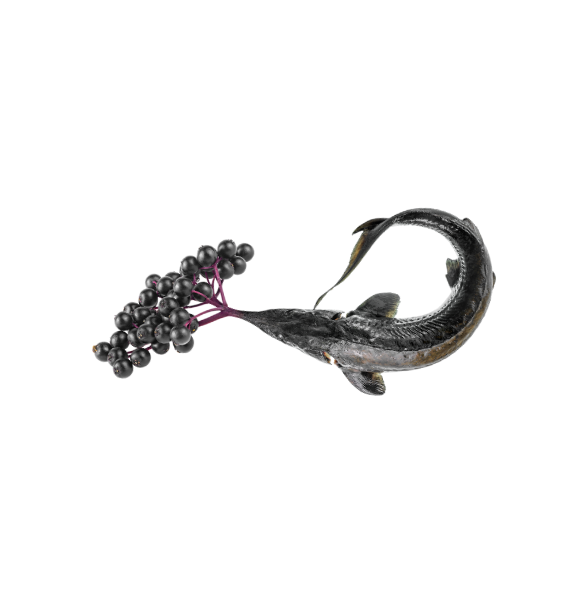News
Eneko Atxa pays tribute to the producers through his recipes
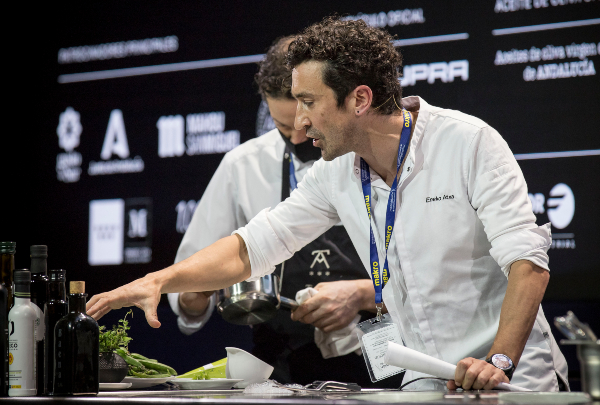
In Eneko Atxa’s conference in Madrid Fusión Foods of Spain, he pays tribute to eight of the producers with whom he works by creating eight recipes whose core focus hinges on one ingredient.
Eneko Atxa’s commitment with the environment, nature and product is indisputable. It is with good reason, that his restaurant Azurmendi was considered the Most Sustainable Restaurant in the World in 2018. This commitment is accompanied by a natural interest for working with close, nearby people who grow, fish, collect, care and pamper each one of the products which will, later on, arrive at Azurmendi’s pantry. And if the pandemic has hit the restaurant business hard, it has not been more lenient with producers, to which the chef wanted to pay tribute presenting eight recipes with products from eight of these producers.
“The kitchens in Azurmendi are not set into motion when we turn on the lights or the stoves but rather when the producers set out to sail in order to catch the best fish or when those who work in the fields commence their day’s work… “, points our Eneko. These words lead to a video which highlights the figure of each one of these suppliers. Images and photographs accompanied by the “haikus” (poems) of Kirme Uribe which represent “the sensations they make me feel” and are dedicated to corn, honey, algae, peas, flowers, eggs or fish.
The first dish he presents emanates from txakoli. “Most of the txakoli we can find today is white, but such was not always the case, in the past it was red. A radical change took place and another grape was chosen. Consequently, the red grape disappeared”. His work has been to recover and use it, preparing a vermouth which can be tasted in his restaurant accompanied by an aperitif in the shape of a rose and eaten in a single mouthful.
The egg plays the leading role in his following dish. A seemingly simple preparation, similar to sautéed mushrooms. The dish is prepared by using the yolks, mixed with mushroom juice and making a paste. The paste is cut and placed into two moulds to turn it into a tartlet. On the other hand, the cured yolks are taken and placed in the base of the tartlet. The yolks have been dehydrated in order to maintain their creaminess. A few sliced laminated mushrooms are then placed on top.
The sea is the inspiration for the following dish and based on a recipe of Eneko’s childhood: Spider Crab Donostia Style. Making a traditional American sauce with the crab’s own shells, it is flambéed and 3/4 part reduced. The juices are a key part of Eneko’s cuisine and form part of a large number of his recipes. It is texturized and place in a mould which is previously cooled in order to solidify. Finally, the crab is filled with its own meat, spawn is placed on top and it is all presented on the dish.
The next recipe is based on cauliflower. A vegetable the chef claims to being especially fond of because “you can draw 200% from it”. This green vegetable is prepared in several textures: cream, sorbet and powder. The dish is constructed with these three pieces and is accompanied by flowers impregnated with the aromas of the cauliflower.
The tear pea, “the product that has become very important in gastronomy in the last few years” recognised Eneko, is the next protagonist. And the ones he presents are even more special since Guillermo, the producer, collects them before the first ray of sun comes out in order to preserve all its sugars. The chef makes a ham broth which is texturized, to prepare the dish. Then, he peels the peas, blanches them and paints on the texturized broth gel. With the pea pods he constructs “an aerated sponge cake”. And makes an infusion with the wild peas. And finishes by creating the recipe with a bed of pods, a crocante prepared with these and the peas painted with the gel. Demonstrating that a single product can provide several preparations.
The following dish is a Vizcaya sauce with purple onion, ham fat and dehydrated red pepper. It is served on a small spoon, a dish they feel very identified with, “it’s like a little part of us”, the chef points out.
The stew pot is the next dish. “It’s a typical stew pot broth and chick peas. Following a recipe of my childhood: we place pig trotters, chick peas, onions, leeks, pumpkins…” Atxa explains. While it cooks, a cow tail is prepared, cooked, crumbled, made into small dice and wrapped in bacon and corn bread. Finally, the recipe is created: bed of broth, with ravioli – the wrapped cow tail-, caviar and green shoots.
The last dish is dedicated to honey. A dessert, a curd. Prepared with sheep’s milk in which he infuses a bouquet of flowers curdling it. Meanwhile, the honey is slushed and an air is prepared. All placed on the dish with a final touch: alder flowers.
“These eight dishes are to give thanks to eight of our producers” he sums up. And adds, “for us, working with people who a close to us is something that comes quite naturally but we are not radical. It’s just a simple way to work. However, one has to be flexible. During the pandemic, the restaurant sector has suffered, but so have the producers. Recently Frantzén’s team asked me about the peas we serve in Azurmendi and I gave them the contact of Guillermo, my supplier. Thanks to this, he has been able to sell his produce. So, let’s not fall into radicalism, things don’t always have to remain the same, let’s be coherent”.

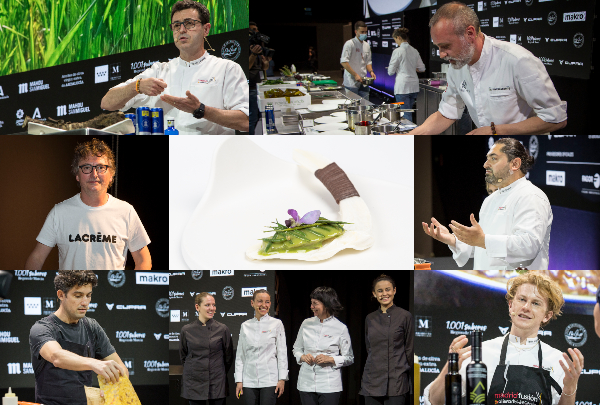
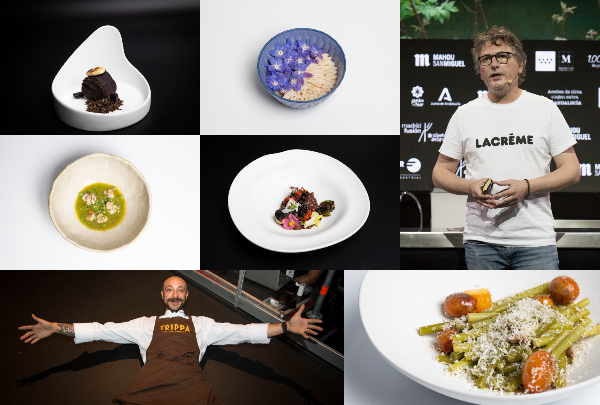
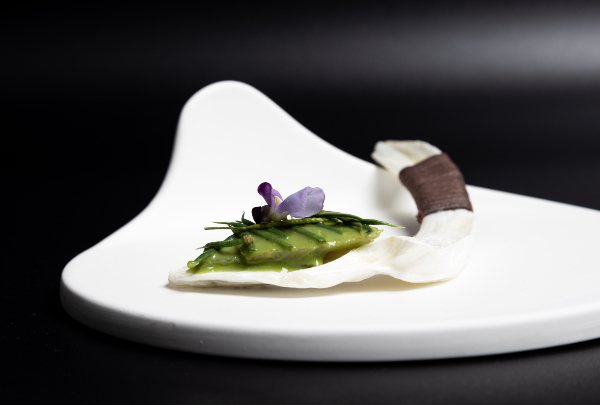
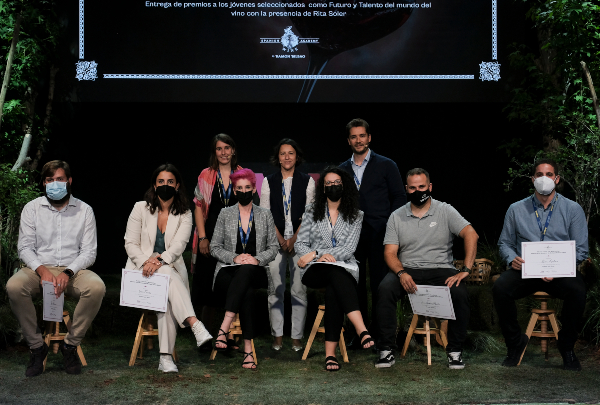
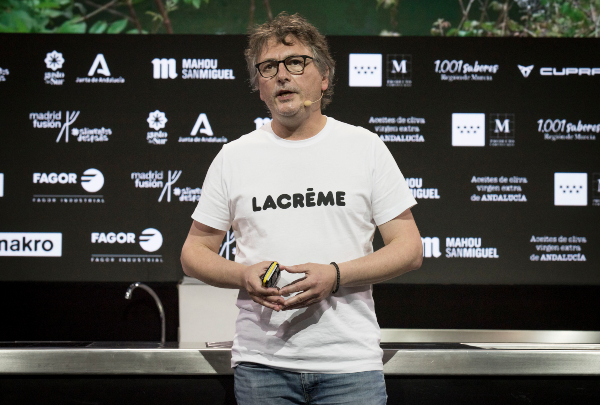
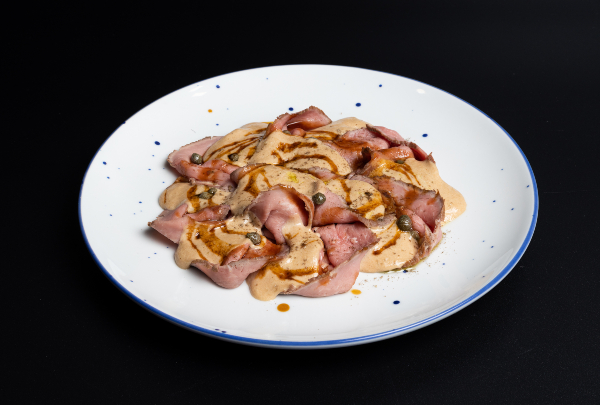
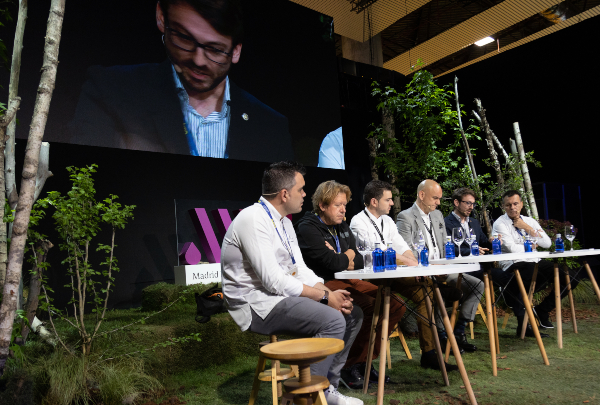
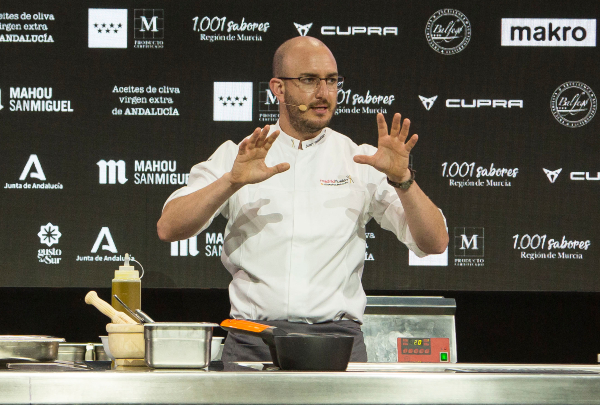
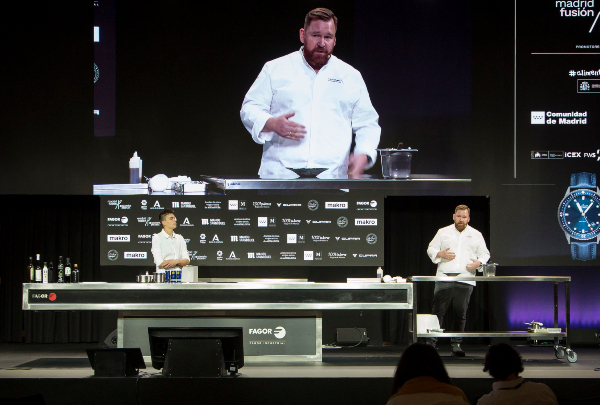
.jpg)
